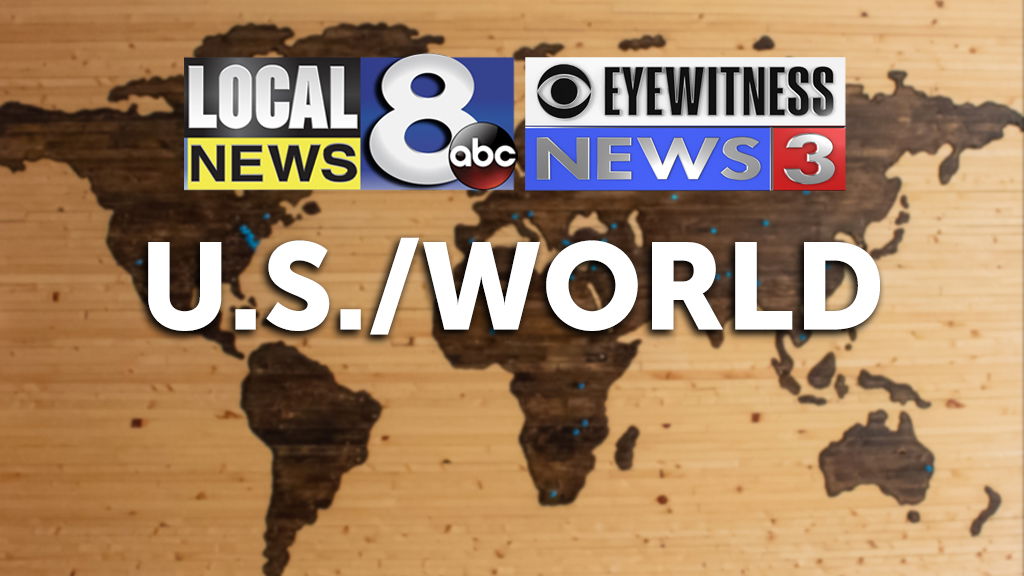This food has a 6,000-year-old history that shaped the basis of what we eat today

By Megan Marples, CNN
You might find it’s nearly impossible to keep your mouth from watering at the thought of warm, yeasty bread straight from the oven.
The delicious, versatile food can be found in nearly every home in Western culture, yet few know about the thousands of years of history behind their humble breadbasket.
Amateur baker Eric Pallant didn’t develop a keen interest in bread and its origins until a chance encounter nearly 30 years ago at a picnic altered the trajectory of his life.
Pallant’s “Sourdough Culture: A History of Bread Making From Ancient to Modern Bakers,” details his quest to find the origins of his sourdough starter. The book comes out on September 14.
While enjoying a crusty slice of bread at the picnic in Cambridge Springs, Pennsylvania, Pallant remarked on its robust taste and fluffy texture. The baker offered him a portion of the sourdough starter so he could re-create the tangy loaf at home.
Pallant, who is also a professor of environmental science and sustainability at Allegheny College in Meadville, Pennsylvania, spent decades feeding the starter flour and water to keep it alive while using portions of it to bake his own bread.
Sourdough starter is made from a combination of flour and water, he said. Over time, different species of yeast will begin growing in the ecosystem and create tiny pockets of gas, which is what allows the bread dough to rise. With proper care, starters can last for multiple generations.
Pallant traced the origin of his starter back at least 125 years but didn’t stop there. Fueled by curiosity, he embarked on an ancestral investigation into the history of sourdough bread and how it impacted millennia of food culture.
A 6,000-year-long journey
It’s not well documented when the first person made a batch of the doughy food, but historians believe it was invented about 6,000 years ago, Pallant said. “There wasn’t a written record at the time that bread was being created and invented, so the best we can do is speculate,” he said.
Flatbreads were made starting about 10,000 years ago, but it took a while longer for humans to discover how to make dough rise, Pallant noted.
For thousands of years, people did not know how or why flour and water bubble and then rise when baked, he said. Most wrote it off as a magical or religious phenomenon.
It wasn’t until the mid-1800s that French chemist and microbiologist Louis Pasteur discovered the fermentation process, which is a crucial component of a sourdough starter. Microorganisms like yeast species and Lactobacillus bacteria eat the carbohydrates in the flour, which causes fermentation. The bacteria create lactic acid, which, when it comes to sourdough, results in the ancient bread’s tangy taste.
Over time, people began cultivating one species of yeast commercially, Pallant said. That species — Saccharomyces cerevisiae — is so powerful that it can make bread dough rise in hours, compared to a traditional sourdough dough, which takes a couple days, he noted.
While traditional sourdough bread may have dozens of wild yeast species, along with lactic acid bacteria, commercial bread (think white sandwich bread) is made from just a single yeast, Pallant said. “Sourdough bread has a lot of complicated, complex flavors whereas bread made with just one species of yeast and no bacteria is going to be pretty simple,” he said.
From the Fertile Crescent to San Francisco
Some of the first breads were created in the Middle East, Pallant said. As people emigrated to Europe and other areas of the world, they brought their bread-making skills with them.
France played a crucial role in the evolution of bread, and the French are known as a people who take their time making things, he said. “In some ways, there’s no culture in the world that reveres bread as much as the French do,” Pallant said.
When the French colonized parts of the Americas, bakers continued to create the crusty loaves, he said.
There is documentation of French sourdough bakers in Canada, parts of the United States, and Mexico, Pallant said.
“They also take some of that sourdough starter to the San Francisco Gold Rush of 1849, so there must be some route from France to Mexico to California,” he explained.
The British also brought their bread-making practices to North America, but they commercialized it because it was more efficient and profitable, Pallant added.
Going back to our roots
It’s rare to taste bread made from scratch because most bread is mass-produced and “utilitarian at best,” he said.
In the past couple years, there has been a spike in homemade sourdough bread-making, particularly during the pandemic.
Making sourdough bread reconnected us with other people at a time when we had no connection with others, Pallant said.
“Without even fully being aware of it, it connected us with all of our history, back to the beginning of civilization,” he explained.
Anyone can make sourdough bread, but it takes patience. “Most people, with a modicum of practice and a little bit of training, I guarantee can make something better than what they can buy at the store,” he said.
For those interested in learning how to make their own sourdough starter, Pallant shared his basic recipe.
RECIPE: Sourdough Bread Starter
If you already have a starter, you can follow the second recipe, which details how to make a simple sourdough loaf.
Bake this! Snapshot your creation, then share with #plateitpostit. You might be featured in an upcoming story!
The-CNN-Wire
™ & © 2021 Cable News Network, Inc., a WarnerMedia Company. All rights reserved.
